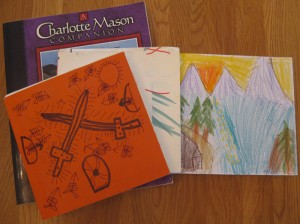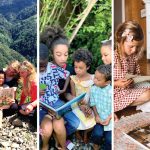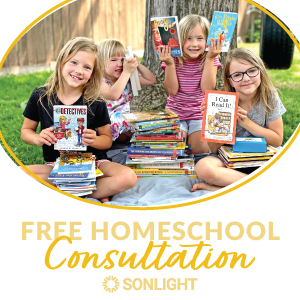"Charlotte who?" I asked my wife. Having grown up with a public school education, I wasn't too knowledgeable or enthusiastic about homeschooling or the types of approaches available. Several years later, I'm glad to say that I'm not only a father of four homeschooled children, but have learned quite a bit about the many different approaches to education.
Charlotte Mason (1842-1923) combined a unique approach to education that many homeschooling families today appreciate. In my home we've found Sonlight and Charlotte Mason integrate well, rather than being opposites or enemies. Although Sonlight is most definitely focused on literature-rich education, this by no means cuts us off from experiencing the world around us or integrating ideas from other educational methods.
How does the Charlotte Mason method tie in to a Sonlight-based education? I've already written about a learning home, which coincides well with Mason's emphasis on the atmosphere in the home contributing to education in significant ways. In my experience, Sonlight families emphasize the importance of a home that encourages and cultivates learning. As C.S. Lewis wrote, "The task of the modern educator is not to cut down jungles but to irrigate deserts."
The Charlotte Mason approach also emphasizes "living" or "whole" books. This means that rather than using typically dry textbooks that are written by committees, a living or whole book is written by a single author. This, of course, fits in quite well with Sonlight's literature-rich approach. Many of our books are stories written by a single author who is enthusiastic about the topic and can communicate in ways that touch our intellect and emotions.
Narration is also a component of the Charlotte Mason method. This means that children learn to comprehend what they've read by sharing about it meaningfully. Sonlight spends a lot of time helping parents and children engage the material they're reading by posing questions that help children remember and think through what they've read.
Another area where I've found Charlotte Mason ideas integrate well is with science. Charlotte Mason encouraged hands-on learning, especially in reference to nature studies. Each of my children has their own nature journal (two are pictured above), where they can record all kinds of things they encounter in nature such as trees, birds, plant life, wild animals, etc. God's world is filled with wonders that we're often too "busy" to notice. Having a nature journal helps us slow down and enjoy the beauty of the natural world, which often prods us to learn more about what we've seen.
A few years ago I had the pleasure of helping to revise Sonlight's A-G science curricula and am glad to report that many of our hands-on activities were inspired by the Charlotte Mason approach to nature studies.
If you'd like to learn more about the Charlotte Mason approach, feel free to do a search online where you'll find a lot of helpful tips. The book A Charlotte Mason Companion by Karen Andreola is also a great help.
Sonlight and Charlotte Mason work well together. What different approaches to education do you integrate? Why do you like them? Let us know!







[…] Sonlight draws heavily from Charlotte Mason's ideas (as well as those of Dr. Ruth Beechick). Sonlight already provides fantastic living books and plenty of hands-on Science activities. You can easily add in nature walks, extra narration and other aspects of Charlotte Mason's approach. I encourage you to read a post from Robert, one of Sonlight's curriculum developers, on combining Sonlight and Charlotte Mason. […]
Michelle, thanks for the insights! You might want to take a look at a recent Sonlight blog post, "Practical Pointers: Combining with a single Core" at this link. Maybe you'll get some tips for integrating Charlotte Mason given your situation. Keep in mind, too, that Sonlight Cores typically span an age range, which is one reason we no longer use numbers to label many of our Cores because they really don't fit neatly into typical grade levels.
I've looked into Sonlight a few times since beginning the Charlotte Mason method 2 years ago. My challenge (and if anyone has suggestions, I'm open) is that it seems Sonlight definitely separates the academic grades. In other words, it appears I'd have to purchase a curriculum for my 8 year old and my 13 year old (as in 3rd and 8th grades.) The resource I use now doesn't go by grade levels but by years. Year I; Year 2, etc (and no, I don't use Amblesideonline). Otherwise, I'd be happy to try Sonlight. :-)
Thanks for the comments. Stefanie, I'm glad I was able to help you make a decision. Connie, it's great to hear that you are integrating Charlotte Mason with Sonlight.
We've used Sonlight for many years and over the last couple years I've begun to incorporate much of Charlotte Mason's methodology including but not limited to artist, composer, hymn and nature study. I think it's a winning combination :)
I am glad I read this today. I have been really trying to decide whether to move to Sonlight for P 4/5 next Spring. We are currently doing Ambleside Yr 0 and while we love it, I feel like Sonlight has so much to offer... I am really hoping that I can blend CM and Sonlight cohesivly... even if it means deviating from SL's reading schedule a bit to draw out the length of the time a book is covered. Thanks for you insight. I really think you helped me make up my mind :-)